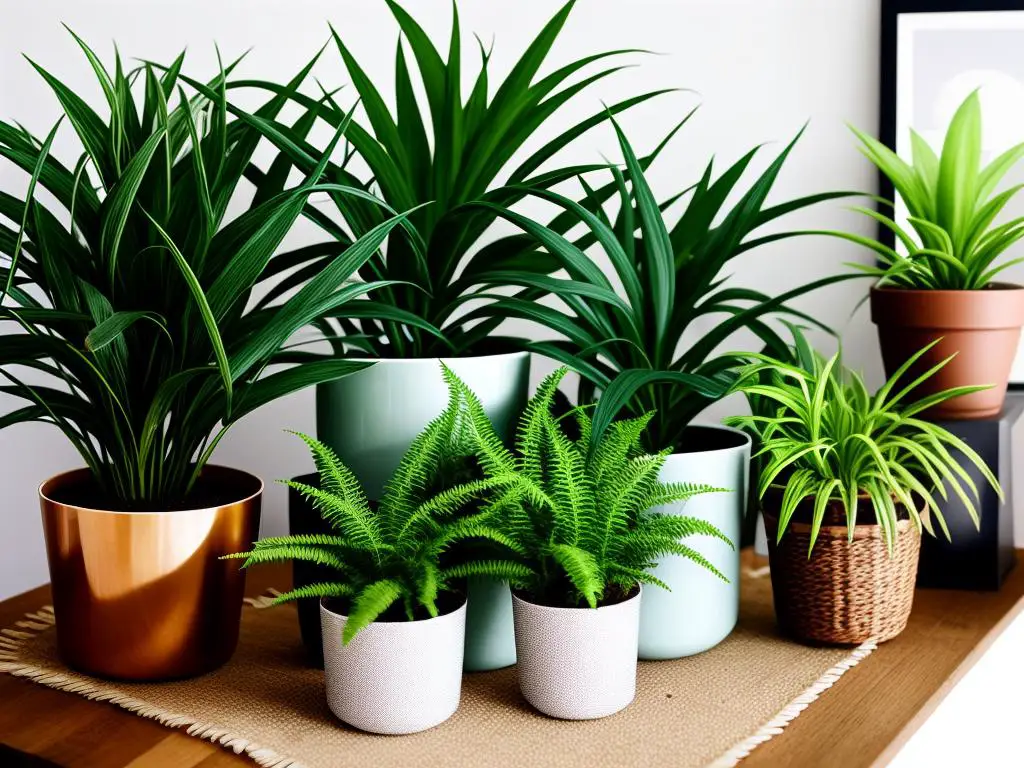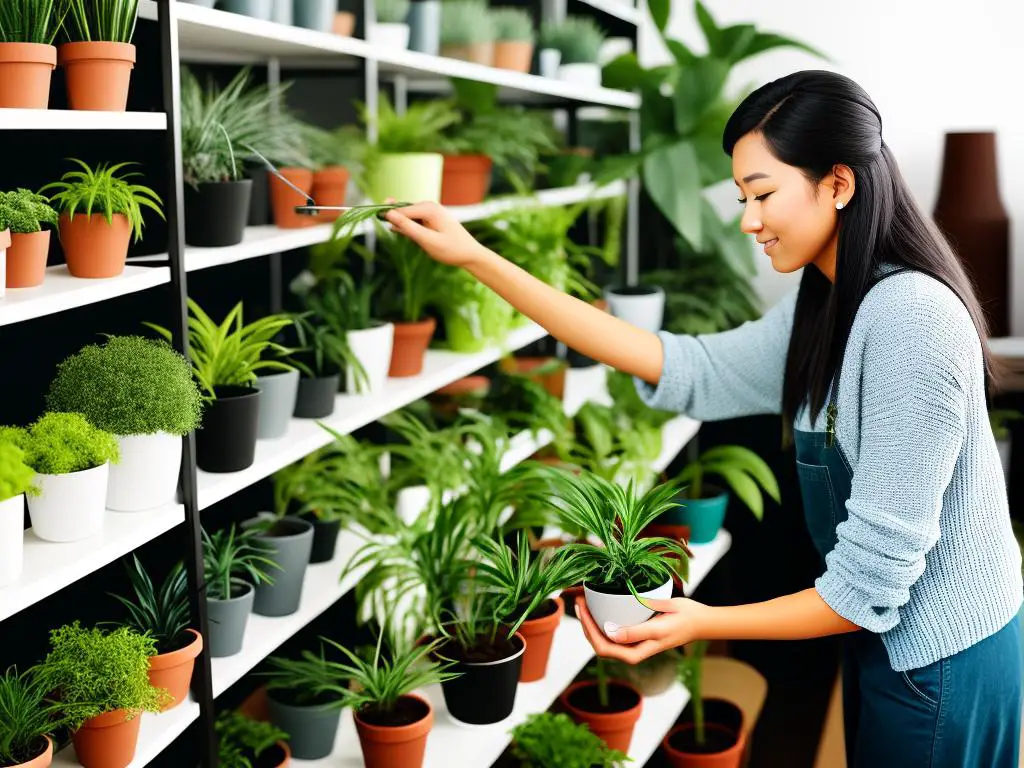Embarking on an exploration of indoor horticulture can be an enriching experience, offering not only aesthetic benefits but also therapeutic ones. Introducing the nurturing, and sometimes challenging, world of houseplants into daily life can intrigue a beginner, with the broad range of species, each with their unique growth habits. Whilst diverse sunlight requirements, temperature preferences, and growth dynamics might seem overwhelming, a structured approach can break it down into digestible wisdom. This insightful journey will delve into the art of choosing the right houseplants, understanding the essential aspects of plant care such as watering, fertilising, and repotting, dealing with garden pests and diseases, and mastering crucial maintenance techniques like pruning and propagation.
Choosing the Right Houseplant
Introduction to Houseplants for Beginners
For many of us, the fascination with the green world often begins with houseplants. These delightful house guests not only add a touch of beauty but can also enhance our well-being by improving indoor air quality. However, not all houseplants are created equal, some are easier to grow, and others might demand a green thumb.
This guide will lead you through the essential points to consider when choosing the right houseplant for your home.
Understanding Houseplants
Before we delve into specific plant types suitable for beginners, it’s crucial to understand the core needs of houseplants – sunlight, temperature, and growth habits. These three factors greatly affect the well-being of your plant.
- Sunlight Requirements: Houseplants, like all plants, perform photosynthesis, which involves using light energy to produce food. Therefore, plants have differing light requirements. Some require bright, direct light, whilst others prefer low, indirect light.
- Temperature Preferences: Most houseplants prefer temperatures around 20°C to 25°C. Some can withstand cooler temperatures, while others need warmer environments.
- Growth Habits: This refers to how your houseplant grows. Does it stretch out wide, or grow tall? Understanding this will help you provide the space your plant needs to grow optimally.
Plant Choices: Ideal Houseplants for Beginners
Several houseplants are perfect for beginners due to their low-maintenance nature and adaptability to various living conditions.
- Spider Plant (Chlorophytum comosum): This is a popular houseplant, known for its long, arching leaves. Spider plants prefer bright, indirect sunlight and thrive in temperatures between 15°C and 23°C.
- Snake Plant or Mother-in-Law’s Tongue (Sansevieria): These have striking, upright leaves and can tolerate low light levels, making them a wonderful choice for rooms with little sunlight. They prefer temperatures between 21°C and 32°C.
- Peace Lily (Spathiphyllum): Peace Lilies have beautiful white flowers, and although they prefer bright, filtered light, they can tolerate lower light levels. They thrive in temperatures between 20°C and 22°C.
- Succulents and Cacti: These desert residents are undemanding and thrive on neglect. They love sunlight but can cope with lower light levels. They prefer warmer temperatures, but some varieties can tolerate cooler temperatures too.
Final Thoughts
Houseplants add charm and life to any room. With the right mix of sunlight, temperature, and space, your plant will not only survive but thrive.
Choosing the right houseplant does not have to be complicated. For beginners, start with a hardy, forgiving variety, and before you know it, your home could resemble an indoor jungle. Happy planting!

Plant Care Basics
Taking the Plunge into Plant Parenthood
Diving into an exciting new chapter of adulthood, you might think about introducing a pinch of greenery into your lifestyle. After all, houseplants can lend a measure of serenity to your space, providing an escape from the monotonous tones of urban existence. However, before adopting a new leafy friend, some basic knowledge about plant care essentials is indispensable to ensure its healthy and vibrant life.
Watering: Finding the Right Balance
First and foremost, each plant has its own unique watering requirements that depend upon its type, the size of its pot, and even the season of the year. But, the chorus from most indoor plants is unified on one principle: Don’t drown us. The classic beginner’s mistake is overwatering. Overwatered plants suffer from root rot and can develop yellowing leaves. To avoid this, always make sure your plant is in a pot with an appropriate drainage hole and utilise a ‘soak and dry’ technique. Water the plant thoroughly, then allow it to dry out completely before the next watering.
Underwatered plants, on the other hand, will typically showcase dry, brown leaf tips and may appear wilted. The soil could be so parched that water simply runs through the pot too quickly to absorb properly. In this case, gently soaking the entire root ball in a sink or basin of water can help revive it.
The Art of Fertilising
Fertilisers provide the essential nutrients that plants require to thrive. However, the rule of thumb for fertilisers is ‘less is more’. Over-fertilising can lead to sudden plant burns or even death. Most indoor plants are dormant in the winter and need little to no fertilisers. They come out of dormancy in the spring and summer, that’s when they can use a little boost.
A balanced, water-soluble fertiliser is usually a safe choice. Use it in half the strength recommended on the product packaging. Try to fertilise your plants once a month in the growing season. Always water the soil first before fertilising to avoid root burn.
Repotting: Not Just a Change of Scenery
As your plant grows, it may outgrow its pot. You would know it’s time to repot when you see roots growing through the bottom of the pot or if your plant begins to wilt shortly after watering. When repotting, choose a new pot that is only slightly larger than the current one and ensure that it has good drainage.
Handle your plant and its root system gently during the transplant and try to keep as much of the original soil around the roots as possible. After repotting, give your plant some time to adjust – don’t panic if it seems to ‘flop’ a bit immediately after the change. With the right light and water schedule, it should bounce back in a couple of weeks.
Looking Ahead
Becoming a plant parent is much more than merely watering and watching something grow. It teaches you about patience, responsibility, and the simple joys of life. Equipped with these basic instructions, you’re well on your way to start your venture into the lively world of indoor plants. Happy gardening!

Dealing with Common Houseplant Pests and Diseases
The Problem of Pests and Diseases in Houseplants
Just like any other living creatures, houseplants can become the target of various pests and diseases. This poses a significant threat for our green companions. First step in gardening is always prevention, but sometimes infestations still occur. Not to worry! There are multitudes of solutions available to bring your plants back to health. This guide will provide you with a compass to navigate in the world of common houseplant pests and diseases.
1. Identification of Houseplant Pests
Pests afflict houseplants in various forms. Here are some of the most common culprits, their descriptions and their behaviours.
- Spider Mites: These tiny insects are almost invisible to the naked eye. You will typically notice their presence from the fine, silky webbing they leave on the plant, or from the discolouration and dropping of leaves.
- Scale Insects: These are small, round, immobile pests that attach themselves to the plant’s stems or leaves. They can vary in colour from brown to white.
- Fungus Gnats: These small, dark flies appear mostly in damp conditions and are attracted by decaying organic material. Their larvae can harm the plant’s roots.
2. Identification of Houseplant Diseases
Plants are also susceptible to various diseases. Some of the common ones are:
- Root Rot: A condition that results from overwatering, causing the plant’s roots to turn brown and mushy.
- Powdery Mildew: A fungal disease characterized by white, powdery spots on leaves and stems.
- Leaf Spot: Brown or black spots on leaves usually caused by bacteria or fungi.
3. Treating the Infected Plants
Upon identification, take immediate action. Here are some treatments based on the identified problem.
- Spider Mites: Moisten a cloth with soapy water and wipe down the plant’s leaves. This cleans the plant and helps prevent mite populations from rising. Regularly repeating this process can effectively control mite infestations.
- Scale Insects: These pests can be removed manually using a soft toothbrush and soapy water. Make sure to check under the leaves!
- Fungus Gnats: Change your watering habits. Overwatering and not letting soil dry out between watering attracts these pests. Additionally, consider using a soil cover to prevent gnats from laying eggs in the soil.
For disease treatment:
- Root Rot: Unfortunately, once a plant is affected by root rot, it is often hard to save. However, you can try to cut away the rotten parts and repot the plant in fresh, well-draining soil.
- Powdery Mildew: Move the infected plant away from other plants to prevent the spread. Treat the plant with a homemade mixture of 1 tablespoon baking soda, 1/2 teaspoon liquid soap, and 1 gallon of water. Spray this solution on affected areas every couple of days until the fungus is gone.
- Leaf Spot: Prune affected leaves and avoid watering from the top as wet leaves can lead to the spread of bacteria and fungus.
Remember, the best remedy is prevention. Regularly inspect your plants to catch these issues early. Maintain clean and healthy environments for your plants to grow. Gardening is a rewarding journey. So don’t worry if your plant encounters a few bumps along the road. With patience and little care, your plant family will continue to thrive.

Pruning and Propagating Houseplants
Embracing the Green: An Introduction to Houseplants
In the liberating world of young adulthood, a houseplant can suddenly become an example of freedom and independence – a little piece of nature to nurture. But where to begin? This guide will introduce pruning and propagating techniques, allowing your houseplants to thrive and multiplying your green companions without digging much deeper into your pocket.
The Art of Pruning
Pruning is like giving your plant a trim, encouraging more balanced growth. It’s not always necessary, but when done correctly, it can truly rejuvenate your plant.
- Choosing the right tools: You will need sharp, clean scissors or pruning shears. You don’t want to tear the stems, or introduce any infections to your plant!
- Identifying what needs to be pruned: Typically, you want to remove any dead or dying leaves to allow the plant to direct energy to new growth. This also helps keep your plant looking its best. Look for yellowing or wilting leaves, brown tips, or leaves that have fallen off.
- Pruning your plant: When you’re pruning, start small. You can always cut more if necessary, but you can’t un-cut! Make your cuts near the base of the stem, but be careful not to damage the main stem.
Remember to always prune with care and deliberation. Your plant is a living being, and just like us, it needs a soft touch.
Propagation Station: Multiplying your Houseplants
Propagating is essentially making more plants from the one you already have. It may sound complicated, but it’s a surprisingly simple process:
- Select the plant you want to propagate: Not all plants propagate the same way, so it’s necessary to do a bit of research on your specific type of plant. However, many common houseplants can be propagated through stem cuttings.
- Make the cut: Using your clean, sharp cutting tool, make a cut just below a leaf node (the spot where a leaf is or was attached). A good cut is usually 10-15cm long.
- Root it: Place your cutting in a glass of water, making sure the cut end is submerged, but that the leaves aren’t touching the water. Change the water weekly until roots start to show, which will generally take 2-4 weeks.
- Plant it: Once the roots are about 2cm long, your cutting can be planted in a pot or in the garden, then watered as usual.
Remember – patience is key! Propagation can take time, but it’s an incredibly rewarding process.
So there you have it, a beginner’s guide to keeping houseplants vibrant and multiplying your collection. Take this newfound knowledge, apply it and watch your indoor jungle grow. Just remember, every plant is unique and may require a bit more research. Happy gardening!

After an enlightening excursion through houseplant selection, dedicated care, pest management, and propagation, one can confidently navigate the complexities and nuances of beginner indoor gardening. With this newfound knowledge, houseplants cease to be delicate, complex beings, morphing instead into an enriching hobby and a haven of flourishing greenery. Remember, understanding the need of the plants and observing them closely is key to ensure their good health. Moreover, mastering the art of propagation can lead to an ever-growing garden within your home. Above all, always remember to nurture patience alongside your plants, as this journey is much more about the progress and knowledge than the destination. Good luck on your green journey!
